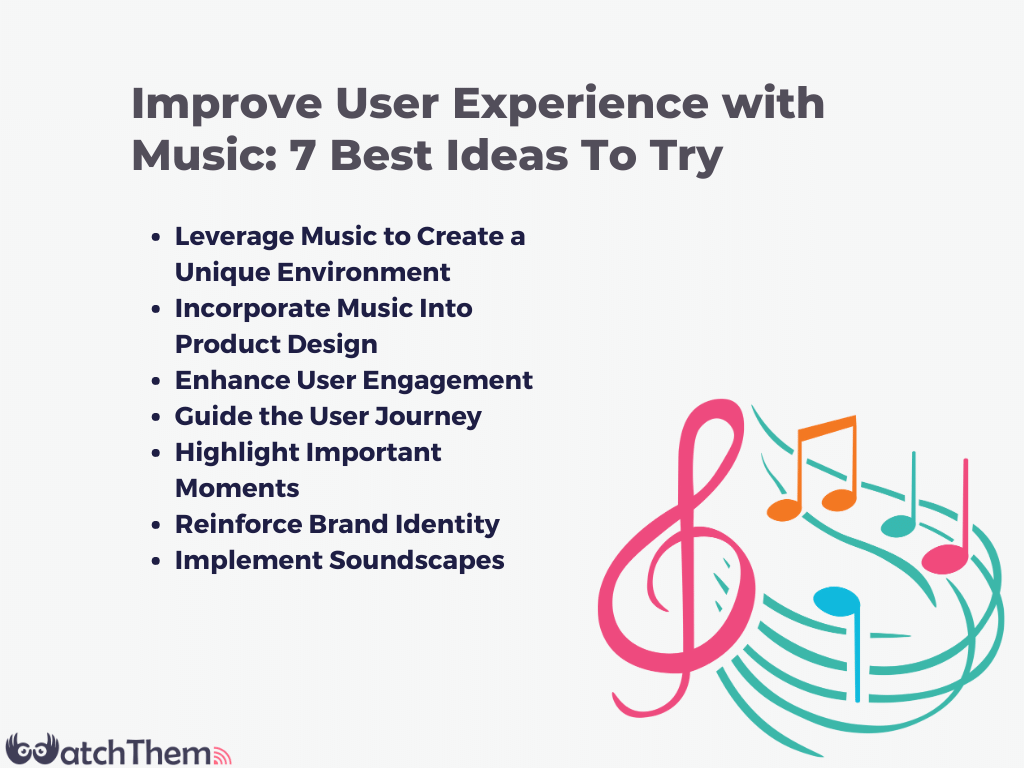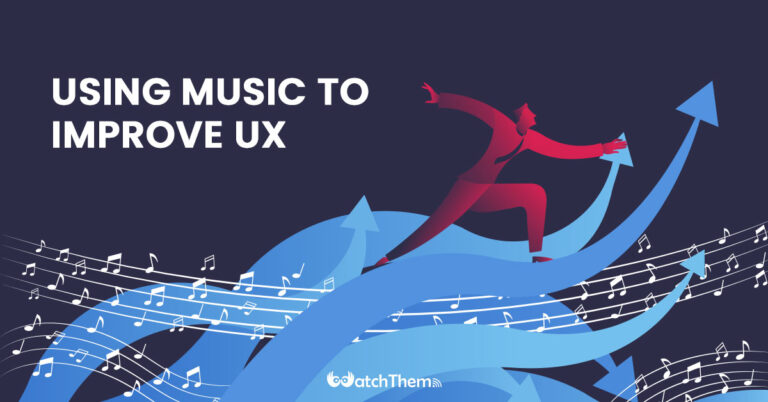Page Contents
Much like many other forms of art, music is integrally tied to design. Problem-solving, collaboration, and creativity are all commonalities and are enhanced when good music is put to use in the right way. As UI/UX designers, it’s important to make sure that every detail of your product serves a purpose and enhances the user experience. When you attempt to improve user experience with music, it can be a great way to ensure users are engaged and immersed in your product.
Indeed, no one can deny the great contribution of UX analytics tools when it comes to improving the user experience on your website. You can utilize music for UX design improvement and then measure its effectiveness with these tools.
In this article, we’ll discuss several different ideas that you can try today to improve your site’s UX design with music. But, if you’re already using this method and are looking for a way to measure how helpful it has been, click on the button below to get free access to one of the best UX analytics tools.
How to Improve User Experience with Music
If you’ve scrolled this far, it means that you still have a vague idea of how you can improve user experience with music. Therefore, let us waste no more time and get down to business without further ado.
Below, you can understand the importance of incorporating audio in your UX design and find out about the 7 best ideas to improve user experience with music and sounds. Ready?


#1 Leverage Music to Create a Unique Environment
Music has the power to influence how people feel and interact with their environment, making it a key factor in user experience. By leveraging music, businesses and websites can create a unique atmosphere to set them apart from their competitors, allowing for deeper connections with their clients and customers.
Music allows users to have greater immersion in the experience of working with, or visiting a website, immersing themselves in its personality and character. It can also act as an introduction or a way to welcome users in setting the mood, and helping to build a relationship with them early on. When used correctly, music can be an invaluable asset when crafting an exceptional user experience.
#2 Incorporate Music Into Product Design
Music has always had an impact on how people experience the world around them. It’s no surprise that incorporating music as one of the UX practices of product design can have a significant effect on user experience. It helps to create a pleasant and inviting atmosphere for users, which can keep them engaged with the product and make the entire experience more enjoyable.
Additionally, music can help reduce stress levels in users by creating a calming environment, deflecting from potential distractions, and highlighting user accomplishments. Product designers should consider utilizing music to create an optimal UX for their products, as it has the potential to create a truly memorable and satisfying experience for users.
#3 Enhance User Engagement
Another thing trying to improve user experience with music paves the way for is user engagement. Music can be used as part of UX designs to increase user engagement, allowing them to determine the right mood within their product or service. Using music in combination with visuals, animations, and other audio effects can create a fresh look and feel for a product or game that grabs users’ attention and encourages them to stay engaged for longer periods of time.
Furthermore, studies have proven that well-crafted audio experiences can improve consumers’ overall enjoyment and perceived value of a product or service. With techniques such as these, businesses are able to create exceptional user experiences by fusing together audio and visual elements into one comprehensive design.
#4 Improve User Experience with Music: Guide the User Journey
With the rise of digital interfaces, the use of music has become a key element in user experience (UX) design. Not only can music create an atmosphere, but it can also be used to guide users through their journey within an interface or application.
By studying how users navigate your product and designing sonically-driven pathways that are triggered in specific moments, you can increase levels of engagement by making interactions more memorable. Using music in this way can provide a distinct identity for your product and help encourage better user experiences overall.
#5 Highlight Important Moments
The idea to improve user experience with music has become an increasingly popular topic in web and app design. Music can evoke emotion, change how a user perceives the interface, and even encourage users to take certain actions. It can also be used to create a pleasant atmosphere that drives engagement. Think of the upbeat music that often accompanies game apps.
On an even more subtle level, music can be used to highlight important moments within a digital experience, such as an alert sound that lets users know when something in their profile has been updated. Carefully crafted music is an effective way for designers and developers to give the user unique experiences. They create an extra layer of emotional depth and response.
#6 Reinforce Brand Identity
Music has a profound impact on user experience. Innovative companies can use music as an important tool to reinforce their brand identity and create meaningful connections with consumers. Music plays a powerful role in evoking emotion and can be used to craft unique visual content that leaves a lasting impression on viewers.
By choosing the right soundtrack, businesses can communicate their individuality while also appealing to their target audience. When used strategically, music can be leveraged to draw attention to specific messages and moments, further enhancing user interaction on websites and other digital platforms.
#7 Implement Soundscapes
Using soundscapes is an effective way to improve UX, as it has been scientifically proven to have positive effects on users. By incorporating royalty free music and ambient/soundscape elements into your product, you can create a more immersive experience for your customers.
Near-invisible musical cues can greatly heighten a user’s emotional engagement with your product while also subtly guiding them through their workflow. For instance, background music can make the process of completing a task or onboarding onto a service more enjoyable, while sound cues may give users an indication that they have reached specific points within the product without distracting them from their current goal.
When implemented well, soundscaping will ensure that users have not only an enjoyable experience but also one that feels natural and effortless.
Improve User experience with music now
As businesses continue to prioritize the user experience, audio experiences will become increasingly important. By leveraging music and sound design strategically, businesses can create emotional connections with their customers that are tailored to their brand identity. Doing so enables businesses to differentiate themselves from the competition while also improving overall satisfaction levels.
If you produce YouTube videos for your business and make music videos or how-tos for your YouTube channel, you’ll probably want to know how to use copyrighted music on YouTube. You can always search through YouTube’s audio library for creative commons music, public domain music, or search through a royalty-free site’s own downloadable music library.
Also, don’t forget to measure the effectiveness of your UX strategy by signing up on WatchThemLive; the best UX analytics tool!

